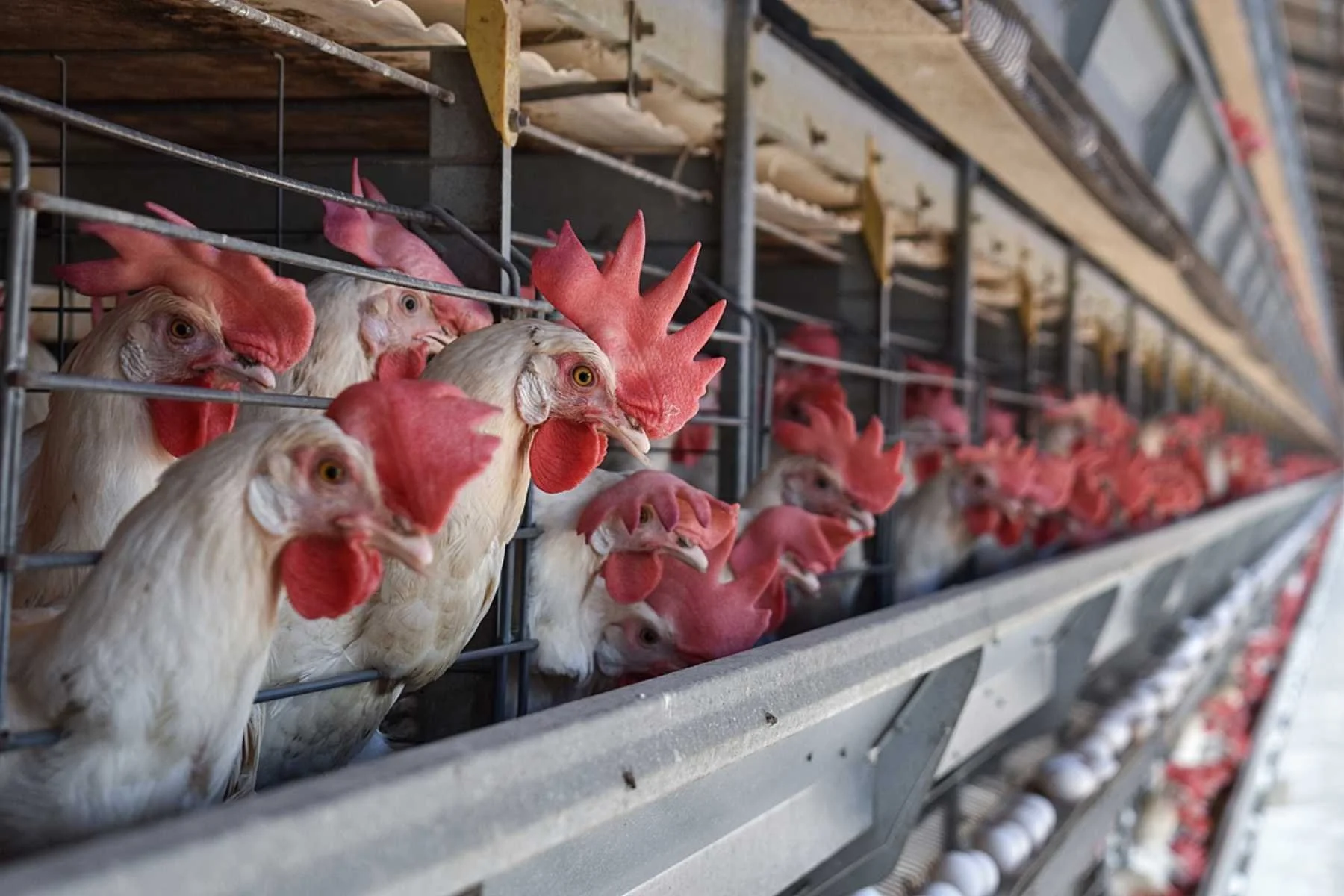These Photos Will Make You Stop Eating Animals
The images of what happens to animals behind closed doors are uncomfortable and upsetting, but they’re also powerful. They can encourage us to face the suffering that is caused by choosing to eat animal products.
The animals who are farmed for our food are often kept hidden from view. That’s because if people saw the reality of what happens to animals trapped in the food system, many of us wouldn’t be able to stomach it.
Dairy
Many of us grow up believing that cows produce milk naturally and that we simply “borrow” some of the leftovers to drink for ourselves. But this couldn’t be further from the truth. Cows are mammals, and just like us, they produce milk to nourish their young.
In the dairy industry, female cows are usually repeatedly artificially inseminated. When they give birth, their calves are normally taken away from them within a few hours - they will likely never see each other again. After being taken from their mothers, calves are kept in lonely, barren cages and fed a diet of milk replacer so that we can drink the milk intended for them.
Female calves will eventually enter the same cycle as their mothers - being raised and used for milk production - while male calves will be slaughtered for veal after just a few short weeks after birth. It is estimated that 700,000 calves are slaughtered for veal in the U.S. alone every year.
Eggs
Shortly after birth, chicks are separated into males and females. As they can’t produce eggs and they are not suitable for chicken-meat production, male chicks are of no use to the egg industry. This means that they are killed shortly after birth. Methods include gassing and maceration (also called 'grinding', 'shredding' or 'mincing'); the chicks are placed into a large high-speed grinder. In the U.S., more than 100 million male chicks are killed by the egg industry every year.
As for the females, they then housed in cramped, wire battery cages, with up to 11 other hens. This is where they will spend their lives until their egg production begins to wane at about 12-18 months old. At this point, they will be sent to the slaughterhouse where their throats are slit.
Meat
Nearly 9 billion chickens are raised and killed for meat each year in the U.S, and 99 percent of them are raised on factory farms. They spend their entire lives in dark, cramped, windowless sheds. Then, when they reach “slaughter weight” - usually at around six to seven weeks old - they endure a terrifying journey to the abattoir. It is here that they are shackled upside down and have their throats slit by a machine. To remove their feathers, they are then dumped in scalding-hot water - many of them are still conscious and bleeding out as they enter the water.
The plight of pigs and cows in the food industry is similar. The natural lifespan of a cow can reach up to 25 years old, but cows in the beef industry are sent to the slaughterhouse at just 14-16 months old. The transportation process is very stressful for them as cows are naturally afraid of new surroundings. The animals can be confined in transport trucks for up to 36 hours without rest and during this time, they are completely deprived of food and water. At the slaughterhouse, workers fire a captive bolt pistol against the animals’ forehead. The cows are then shackled and their throats are cut. During this process, many of them are still partially conscious.
As for pigs, after being raised in dark, cramped, and disease-ridden conditions, they are piled into trucks and sent to the slaughterhouse at just six months old. A fraction of their natural 10-15 year natural lifespan. In the U.S. 121 pigs million are killed for food each year. Most mother pigs spend their lives in gestation crates. These crates are so small, they can’t even turn around. When their piglets are born, they are transferred to farrowing crates, which are similar but allow them a tiny bit more space to nurse their young. Piglets are taken from their mothers after just a few days, and the cycle continues for another 3 - 4 years until they are sent to slaughter.
Fish
Fish are arguably one of the most abused animals on the planet. It has been scientifically proven that they are capable of feeling pain, but despite this, a trillion fish are killed every year with little regard for their capacity to suffer. For those raised on factory farms, the suffering is intense. They are kept in highly crowded, filthy conditions, and there are large levels of disease and parasites, such as sea lice.
For fish raised or caught for food, the most common killing method is prolonged suffocation - a method that is typically deemed illegal for other animals killed for food, such as cows, pigs, and chickens. Other methods include freezing them to death, and allowing them to be crushed in nets under the weight of other fish, and severing them in half while they’re still conscious.
What Can I Do?
Try Vegan
The easiest way to help change the world for animals is to leave them off your plate. And Species Unite is here to make your vegan journey as simple as can be. Let us give you the tips, recipes and inspiration to get you started on your way - just sign up to our 30 Day New Year's Resolution Vegan Challenge today. You can sign up any day in January and get emails sent straight to your inbox to keep you on your goal.
Share With Your Friends
More stories:
Species Unite
A collection of stories of those who fight the good fight on behalf of animals.









From an owl who taught a city how to hope, to the fight to restore collapsing kelp forests, to the urgent push for justice for animals harmed by human systems - these are the stories behind Species Unite’s most listened-to podcast episodes of 2025.